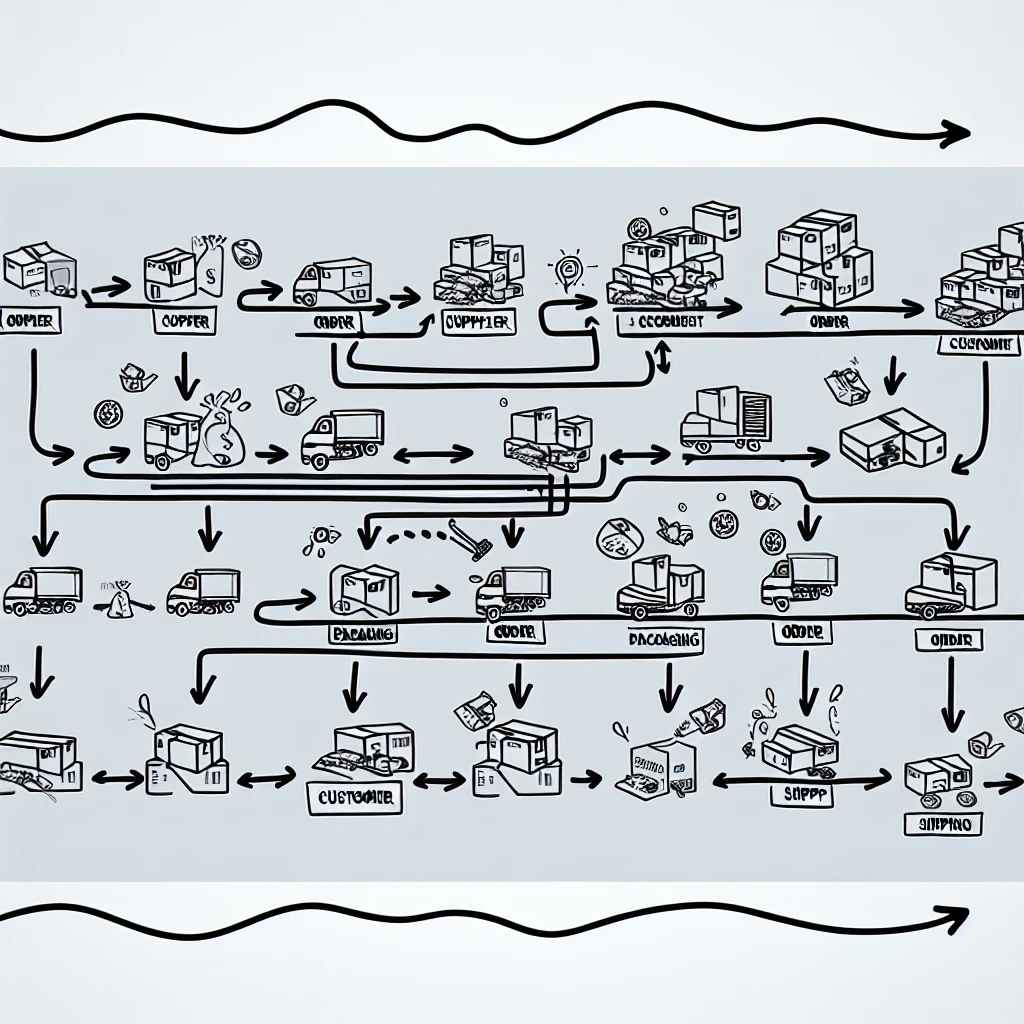Basics of Inventory Forecasting
When it comes to running a successful ecommerce business, mastering the art of inventory forecasting is akin to having a crystal ball. It's about predicting what your customers will want before they even click 'add to cart'. But let's demystify this process and break down why it's not just a guessing game, but a strategic maneuver that can significantly bolster your bottom line.
At its core, inventory forecasting is the process of estimating the amount of product you'll need to meet customer demand without overstocking, which can be as detrimental as understocking. It's a delicate balance, but when done correctly, it can lead to reduced holding costs, improved cash flow, and a better understanding of your customers' buying patterns.
One of the fundamental principles of inventory forecasting is understanding the ebb and flow of your sales. This means diving deep into your sales data and recognizing patterns and trends. Are certain products seasonal? Do you notice a spike in sales after a marketing campaign? These insights are invaluable for making informed predictions about future sales.
Another cornerstone of inventory forecasting is staying agile. The ecommerce landscape is ever-changing, and what worked yesterday may not work tomorrow. This is where the benefits of a solid forecasting strategy really shine. By staying ahead of the curve, you can pivot quickly, adapting your inventory to meet the latest consumer trends and demands, thus avoiding the dreaded stockouts or overstock situations.
Effective inventory forecasting also involves understanding lead times and working closely with your suppliers. Knowing how long it takes to restock can help you time your orders perfectly, ensuring that you're never caught off guard by a sudden surge in demand. This proactive approach not only keeps your customers happy but also strengthens your supplier relationships, as it shows that you value their time and services.
In summary, inventory forecasting is not just about numbers; it's about strategically aligning your business with the pulse of the market. It's a powerful tool that, when wielded with precision, can give you a competitive edge in the bustling world of ecommerce. So, dive into your data, stay flexible, and keep your finger on the market's pulse - your business (and your wallet) will thank you for it.
Tools for Demand Planning
Now, let's talk about the arsenal you need to master this predictive art: the best tools and software for demand planning in ecommerce. In the digital age, savvy business owners don't rely on gut feelings alone; they arm themselves with powerful software that can crunch numbers and analyze data with astonishing accuracy. These tools are the unsung heroes that transform raw sales data into actionable insights.
Imagine having a system that not only tracks past sales but also factors in variables like seasonality, market trends, and promotional impacts. That's the kind of sophistication today's top demand planning software offers. They use algorithms and machine learning to forecast demand with a level of precision that was once thought impossible. And the best part? They can often integrate directly with your existing ecommerce platform, creating a seamless bridge between your sales data and inventory decisions.
But with so many options on the market, how do you choose the right one? It's not about picking the most expensive or the most popular; it's about finding the tool that aligns with your business's unique needs. Consider factors like ease of use, integration capabilities, and the level of customization available. A tool that allows you to input your specific business rules and logic will serve you far better than a one-size-fits-all solution.
Some of the frontrunners in this space offer dashboards that provide a visual representation of your inventory health, predictive analytics that warn you of potential stockouts, and even suggest optimal reorder points. These features are invaluable in making informed, data-driven decisions that keep your business agile and responsive to market changes.
Whether you're a small startup or a sprawling enterprise, investing in the right demand planning tool is a step towards more strategic inventory management. It's about equipping yourself with the knowledge to make smart, timely decisions that ultimately lead to happier customers and healthier profit margins. So, take the time to research, demo, and find the tool that will turn your inventory forecasting from a daunting task into a strategic advantage.
Implementing Predictive Analytics
Stepping into the realm of predictive analytics for inventory management in ecommerce is akin to gaining a crystal ball that offers glimpses into the future of your business. But how do you harness this predictive power? The key lies in understanding the data at your fingertips and using it to inform your inventory strategies.
First and foremost, you'll need to gather historical sales data, which is the cornerstone of any predictive analytics endeavor. This data should be as detailed as possible, capturing the nuances of customer behavior over time. Once you have this data, the real work begins. You'll employ algorithms that learn from your sales history to identify patterns and trends. These aren't just any patterns, but those that signal future purchasing behavior, allowing you to anticipate demand before it happens.
But predictive analytics isn't just about looking back; it's also about looking around. You'll need to factor in external variables such as seasonal trends, economic indicators, and even social media sentiment. These elements can have a profound impact on demand, and your analytics must be agile enough to account for them. This is where machine learning comes into play, adapting and refining its predictions as new data comes in.
Implementing predictive analytics also means embracing a culture of continuous improvement. It's not a set-it-and-forget-it tool; it requires ongoing attention and tweaking. As your business grows and market conditions shift, your predictive models must evolve too. Regularly revisiting and refining your algorithms ensures that your inventory forecasts remain accurate and relevant.
Finally, let's talk about integration. Predictive analytics tools are most powerful when they're fully integrated with your ecommerce platform and other business systems. This integration allows for real-time data flow, ensuring that your predictive insights are based on the latest information. It also streamlines the process of turning those insights into action, such as automating reorder points and inventory alerts.
By implementing predictive analytics in your inventory management strategy, you're not just preparing for the future; you're actively shaping it. With each prediction and subsequent action, you're optimizing your inventory levels, reducing waste, and enhancing customer satisfaction. It's a proactive approach that positions your ecommerce business at the forefront of efficiency and innovation.







